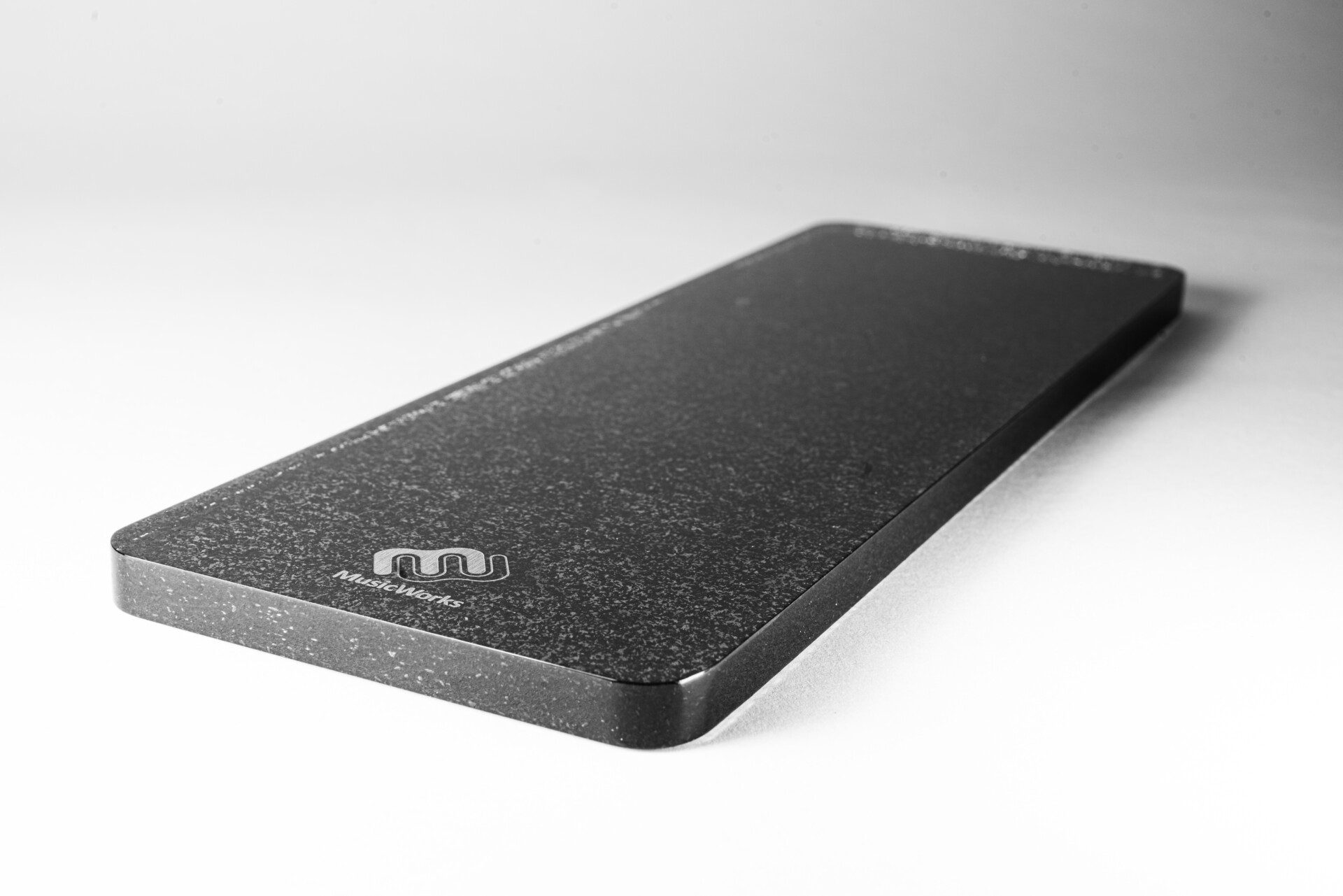Overall, the finished item is, to my eyes, rather pleasing to look at; the subtly speckled and slightly translucent armboard offers a hint of the inner workings which usually stay hidden, the polished finish sitting nicely alongside the mirror finish on the top plate, while the rounded corners on the arm-board remind you that this is no normal Linn. But I didn’t do this for the looks: they’re just a bonus. It’s how it sounds that really matters. And frankly, given how that has turned out, I wouldn’t care if it looked like it had fallen down the stairs…
Performance
I wrote before about the top plate modifications and the improved insights they offer into the structural elements of the music, but that didn’t really prepare me for the scale of the performance increase the AcouPlex modifications provide. In my experience, wherever AcouPlex is deployed, one of the principal benefits is an increase in instrumental body and density. Whether it is feet, spacers, platforms, or full system supports, AcouPlex brings a degree of concentrated integrity to the sound that, once heard, is hard to give up. There’s better definition of all aspects of the note envelope, leading edges are cleaner: faster, tighter and more accurately timed; and decay is natural, with much less superfluous reverberation, lingering vagueness or tendency to bleed into the surrounding notes. There’s an obvious benefit to timing, but also there’s more space around the notes, more silence in those spaces; more scope, in short, for the music to be itself.

And so it is here, the AcouPlex sub-chassis and arm-board enabling a level of insight into the performance that it’s hard to imagine achieving by other means. It’s in the way the musicians shape the notes, or how they play off against each other: or simply how the composer uses the spatial or tonal arrangement of the parts to add an extra dimension to the music. But unlike many a ‘transparent’ system, this isn’t deconstructed and offered for close inspection, it’s just naturally the way things are. When we go to a live concert, we don’t consciously notice that the basses are ‘over there’ or the horns ‘back there’ or the violins ‘here’ and ‘here’. We just relax and take in the orchestra as an entity comprised of its parts, the spatial arrangement itself a part of that entity. Short of big (and generally expensive) wide-bandwidth systems, it’s comparatively rare for any system to discriminate down to this level and to do so, so naturally. Rarer still is the system that can do so without dissecting the music and losing some of the magic in among the detail. At least, not for the ‘voice of sanity’ budget, anyway.
Take my long-term favourite account of the Shostakovich Piano Concerto No. 2: John Ogdon with the Royal Philharmonic Orchestra (HMV/EMI ASD 2709). I’ve always loved this version for Ogdon’s muscularity; so many interpretations deliver this concerto as a relatively lightweight piece, of little consequence. Ogdon adds enough weight and gravitas to counterbalance the playfulness, there’s more light and shade and the work benefits. But with the AcouPlex sub-chassis and arm-board, other subtle dimensions reveal themselves. Whether it’s in the simple jauntiness of the opening; or the way the piano sets itself against choppy, syncopated strings in playful, agile dialogue; or simple but often hidden details such as the main melodies now quoted in the left hand accompaniment; or by the inner string parts by way of harmony; layers of complexity and subtlety in both the composition and the musicianship are suddenly revealed – or reveal themselves. The slow movement opens with a lyrical melody on strings in a minor key, but when the piano enters, it does so in the major key and it’s like the sun coming out from behind clouds. I’m familiar with the effect, and indeed the cause, but this time it worked all the better because the string harmonies were more clearly resolved, establishing the minor tonality all the more firmly. The structure of the music isn’t merely in the physical layout of the orchestra, it’s in the way each part aligns and interacts with the others. So often the dividing line between parts is merely hinted at, but here each part has its own time and space, and you can zoom in, or out pretty much at will, or as the music takes you.

